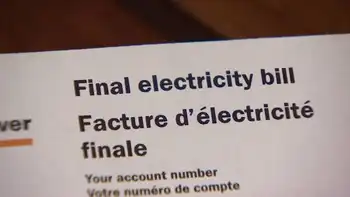Rich nations' greenhouse gases up, despite Kyoto
OSLO, NORWAY - Industrialized nations' emissions of greenhouse gases edged up to the highest level in more than a decade in 2004 despite curbs meant to fight global warming, data compiled by Reuters showed recently.
The figures, based on national submissions to the U.N. Climate Secretariat in Bonn, indicate many countries will have to do more to meet 2012 goals set by the U.N.'s Kyoto Protocol for cutting emissions of gases from fossil fuels.
Emissions from 40 industrial nations climbed 1.6 percent overall to 17.8 billion metric tons of carbon dioxide - mainly from power plants, factories and cars - in 2004 from in 2003 even though oil prices were surging.
"We're not on track to solve climate change by any stretch of the imagination," said Alex Haxeltine, an expert at the University of East Anglia in England. Governments were doing little to plan for cuts in emissions beyond Kyoto, he added.
Most of the 2004 rise was caused by a 1.7 percent gain in emissions in the United States, the world's biggest source of greenhouse gases, to a record 7.07 billion metric tons. Emissions in the European Union and Canada also rose while Japan's dipped.
Most Industrialized nations except the United States and Australia have ratified Kyoto, which obliges an overall cut in emissions of at least 5.2 percent below 1990 levels by 2008-12 with a shift to cleaner energies such as wind and solar power.
Kyoto is meant as a tiny first step by rich nations to slow global warming that many scientists say could spur more heatwaves, droughts, floods, more powerful storms and swamp coastal areas by melting ice sheets in Antarctica and Greenland.
The 2004 data, most of it previously published by governments but not yet verified by U.N. experts, indicate that emissions are creeping up after a fall since 1990 largely caused by the collapse of Soviet-era smokestack industries.
Overall emissions were 4.6 percent below 1990 levels in 2004, according to the data. Last October, the U.N. Climate Secretariat had said 2003 emissions were 5.9 percent below 1990.
The addition of Turkey, where emissions are rising fast, to the group of countries submitting figures in 2004 also contributed to push up overall emissions. Even without Turkey, emissions in 2004 were the highest since the early 1990s.
They were 5.3 percent below 1990 levels in 1992 and 4.0 percent below in 1991. Emissions sank to almost 8 percent below 1990 levels in the mid-1990s, making some nations wrongly believe Kyoto was easily within reach.
And the overall figures are almost certainly underestimates because Russia has not reported emissions since 1999. Since then the U.N. Climate Secretariat has simply rolled over the 1999 data, when Russia's emissions were 39 percent below 1990 levels.
"I think there has been an increase again in Russia because of strong economic growth," said Arild Moe, an expert on Russia and climate change at the Fridtjof Nansen Institute in Oslo.
And the data do not include emissions in the Third World - not covered by Kyoto. Fast-growing China and India were the world's second and fifth biggest sources of greenhouse gases in 2000, according to U.N. data.
President Bush pulled out of Kyoto in 2001, arguing that it would harm the U.S. economy and wrongly excluded developing nations from targets to 2012. His goal is to restrain the growth of greenhouse gas emissions.
Related News

Hundreds facing hydro disconnection as bills pile up during winter ban
TORONTO - The first of May has taken on new meaning this year in Ontario.
It's when the province's ban on hydro disconnections during the winter months comes to an end.
Wendy Watson, the director of communications at Greater Sudbury Utilities, says signs of the approaching deadline could be seen in their office of the past few weeks.
"We've had quite an active stream of people into our front office to catch up on their accounts and also we've had a lot of people calling us to make payment arrangements or pay their bill or deal with their arrears," she says.
#google#
Watson says there are…




